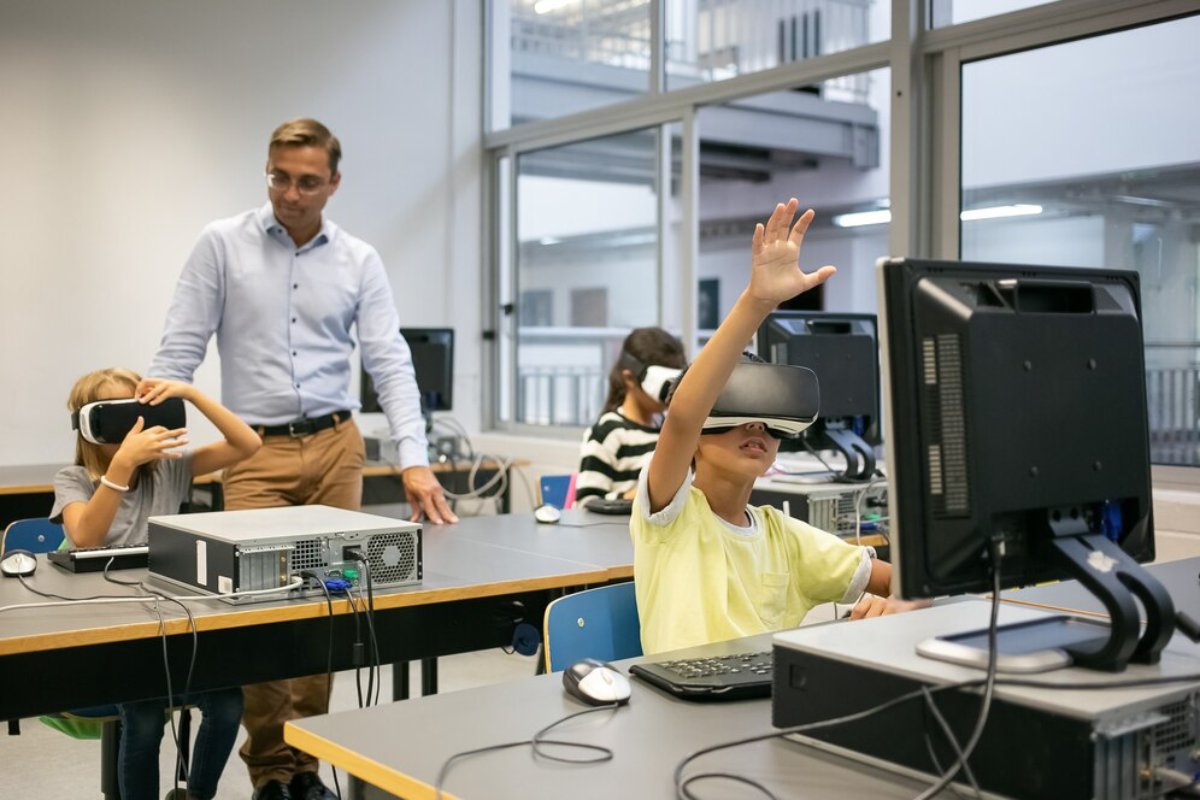The Education Blog

How Gamification is Transforming STEM Education
In today’s digital age, STEM education (Science, Technology, Engineering, and Math) is evolving rapidly. Gamification is changing how students learn STEM subjects. It uses game design elements in education. Gamification makes learning fun and engaging. It boosts motivation, improves problem-solving skills, and helps retain knowledge.
Gamified STEM education makes tough concepts easier and more fun for everyone. It includes coding challenges, virtual science labs, and math-based role-playing games. This guide looks at how gamification is changing STEM education. It shows why it is a game-changer for students and teachers.
What is Gamification in STEM Education?
Gamification is about using game features and design in places like schools and learning platforms. It incorporates elements like:
- Points, badges, and leaderboards: To reward achievements and track progress.
- Challenges and missions: To simulate real-world problem-solving.
- Narrative-driven experiences: To immerse learners in interactive stories.
- Immediate feedback and rewards: To keep students engaged and motivated.
A math app with quests and points makes learning equations more fun than boring drills.
The Benefits of Gamifying STEM Education
1. Boosts Student Engagement and Motivation
Gamification makes STEM subjects fun by using students’ love for games. Adding competitive or collaborative elements makes learning enjoyable and rewarding.
Key Benefits:
- Increased participation: Students are more likely to stay focused and actively involved.
- Higher motivation: Earning rewards keeps students driven to complete tasks.
- Enhanced enjoyment: Game-like experiences make STEM subjects feel less intimidating.
Kahoot! uses game quizzes that score in real-time to make math and science lessons fun and engaging.
2. Enhances Knowledge Retention and Skill Development
Gamified learning encourages active participation and problem-solving, which leads to better knowledge retention. When students engage with STEM through hands-on challenges, they develop critical skills, including:
- Logical reasoning and critical thinking.
- Problem-solving through trial and error.
- Data analysis and decision-making.
Minecraft: Education Edition lets students create virtual machines and structures. This helps them learn engineering and math concepts while having fun.
3. Makes Complex STEM Concepts More Accessible
Gamification simplifies complex STEM concepts by breaking them into interactive, bite-sized challenges. This makes abstract or difficult topics easier for students to understand.
Key Benefits:
- Visual simulations enhance comprehension.
- Interactive challenges promote hands-on learning.
- Scenario-based learning demonstrates real-world applications.
In DragonBox, students use visual puzzles to learn algebra and geometry. This approach makes math concepts feel more tangible.
4. Fosters Collaboration and Teamwork
Many gamified STEM activities promote teamwork. They do this by using multiplayer challenges, which help build communication skills. Collaborative problem-solving also boosts peer-to-peer learning.
Key Benefits:
- Improved social skills through group participation.
- Enhanced collaboration by solving challenges together.
- Shared learning experiences that increase overall knowledge retention.
In Roblox Education, students work together to build and code virtual worlds. This improves their technical skills and teamwork.
Gamification Strategies in STEM Education
1. Game-Based Learning Platforms
Many STEM education platforms use gamification. This helps teach science, math, and coding in an interactive way. These platforms offer personalised learning paths, adaptive challenges, and immersive experiences.
Top Game-Based STEM Platforms:
- Prodigy (Math): Offers game-based math challenges with quests and rewards.
- CodeCombat (Programming): Teaches Python and JavaScript through interactive role-playing games.
- Legends of Learning (Science): Provides science-based mini-games that align with school curricula.
- Osmo (STEM for Kids): Blends physical and digital play for fun math and coding lessons.
Tip: Teachers can use these platforms in their lesson plans. This helps reinforce STEM concepts through play.

2. Virtual and Augmented Reality (VR/AR) Learning
Gamification through VR and AR technology immerses students in interactive, 3D learning environments. This makes abstract STEM concepts more tangible and memorable.
Benefits of VR/AR in STEM:
- Enhanced engagement: Realistic, hands-on learning experiences.
- Better comprehension: Visualising scientific processes and math problems.
- Increased curiosity: Gamified exploration encourages experimentation.
zSpace provides immersive science simulations. Students can dissect virtual frogs or explore the solar system in 3D.
3. STEM Competitions and Challenges
Gamified competitions motivate students to apply STEM skills in real-world scenarios. These events often include problem-solving tasks, coding challenges, and engineering projects.
Popular STEM Competitions:
- FIRST LEGO League: Students design and programme robots to complete missions.
- Hour of Code: Introduces coding through gamified exercises.
- NASA’s Rover Challenge: Students build and test simulated space rovers.
- CyberPatriot: A cybersecurity competition with gamified defence challenges.
Tip: Get students involved in STEM competitions. This helps them build teamwork, creativity, and problem-solving skills.
4. Interactive STEM Projects and DIY Kits
Gamification can extend beyond digital platforms through DIY science and engineering kits. These hands-on kits allow kids to create, experiment, and learn through play.
Gamified STEM Projects:
- DIY Robotics Kits: Let students build and program their own robots.
- Escape Room Challenges: Use math and science clues to solve puzzles.
- Coding Board Games: Teach programming logic without a screen.
- Science Experiments with Challenges: Introduce problem-solving tasks (e.g., create a working volcano with specific materials).
Tip: Add time limits or rewards to increase the challenge and excitement.
5. Personalised Learning Through Adaptive Gamification
Modern STEM platforms use adaptive learning algorithms. These algorithms change the difficulty based on how well a student is doing. This personalised gamification keeps students appropriately challenged and engaged.
Benefits of Adaptive Gamification:
- Custom learning paths tailored to individual skills.
- Real-time feedback and progress tracking.
- Continuous improvement through incremental challenges.
Duolingo Math changes the difficulty as students improve. This helps them grow steadily and stay motivated.
 How Educators Can Implement Gamification in STEM
How Educators Can Implement Gamification in STEM
1. Use Gamified Apps and Tools in the Classroom
Teachers can use STEM apps and platforms in their lesson plans. This makes subjects more interactive.
- Use math-based games to reinforce concepts.
- Introduce coding challenges to build programming skills.
- Incorporate interactive science simulations for virtual labs.
2. Gamify Homework and Assignments
Make homework more engaging by incorporating game mechanics.
- Award points for completed tasks.
- Create challenges with bonus rewards.
- Implement leaderboards or badges to foster healthy competition.
3. Encourage STEM Game Clubs and Events
Schools can set up STEM game clubs or events. These activities help spark interest in science, coding, and engineering. They are fun and encourage teamwork.
Engaging Strategies for the Digital Age
Gamification is revolutionising STEM education by making learning fun, accessible, and effective. Through interactive challenges, rewards, and immersive experiences, students gain deeper STEM knowledge, critical thinking skills, and technical expertise.
Gamification in education makes learning fun. Game-based platforms, VR simulations, and STEM kits all help with this. It turns STEM into an exciting adventure that helps students succeed in the digital age.









